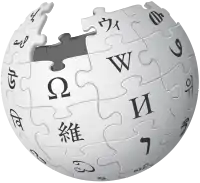pendragon
English
Etymology
Borrowed from Welsh pendragon (“chief war leader”), from pen (“head; chief; principal, supreme”) (ultimately from Proto-Celtic *kʷennom (“head”))[1] + dragon (“dragon; commander, war leader”) (from Latin dracō (“serpent, snake; dragon”), from Ancient Greek δρᾰ́κων (drákōn, “serpent; dragon”),[2][3] possibly from δρᾰκεῖν (drakeîn), from δέρκομαι (dérkomai, “to see, see clearly (in the sense of something staring)”), from Proto-Indo-European *derḱ- (“to see”)). Compare Late Latin īnsulāris dracō (literally “dragon of the island”), used by the monk Saint Gildas (c. 500 – c. 570 AD) in De Excidio et Conquestu Britanniae (On the Ruin and Conquest of Britain) as an epithet of Maelgwn Gwynedd (died c. 547), the king of Gwynedd.[3]
Pronunciation
- (Received Pronunciation) IPA(key): /pɛnˈdɹæɡ(ə)n/
- (General American) IPA(key): /pɛnˈdɹæɡ(ə)n/, /ˈpɛnˌdɹæɡ(ə)n/
- Hyphenation: pen‧drag‧on
Noun
pendragon (plural pendragons)
- Also capitalized as Pendragon: a title assumed by the ancient British chiefs when called to lead other chiefs: chief war leader, chieftain, dictator, despot or king.
- 1810, J[ohn] Stagg, “Arthur’s Cave. A Legendary Tale.”, in The Minstrel of the North: Or, Cumbrian Legends. […], London: Printed by Hamblin and Seyfang, […], for the author, and sold by J. Blacklock, […], OCLC 7000697, page 105:
- [I]n the reign of Henry the Second, a body happening, by chance, to be dug up near Glastonbury Abbey, without any symptoms of putrefaction or decay, the Welch, the descendants of the Ancient Britons, tenacious of the dignity and reputation of that illustrious hero [King Arthur], vainly supposed it could be no other than the body of their justly-boasted Pen-Dragon; and that he had been immured in that sepulchre by the spells of some powerful and implacable inchanter.
- 1853, Beale Poste, “Book I. Britain Tripartite.”, in Britannic Researches. Or New Facts and Rectifications of Ancient British History, London: John Russell Smith, […], OCLC 1006982597, page 43:
- The regal dominion, then, held by the sovereigns of Britain in these ages seems most properly described as an elective monarchy made hereditary; or, to take the converse of the proposition, as a hereditary monarchy requiring to be confirmed at the succession of each monarch by a popular election. […] There was this essential difference, as now in the case of the kings paramount, or pendragons* of Britain, traces of succession by descent are noticeable. […] Thus we find in [Julius] Cæsar’s Commentaries, Gaulish Wars, vii, 4, that Celtillus, a pendragon or leader general of the Gauls, lost his life because he had endeavoured to change his delegated power into an “imperium,” that is, to make it more permanent and settled. [Footnote: * It is common to call the sovereigns of Britain, like Cassibelan, Uther, Arthur, and others, ‘pendragons,’ because Uther Pendragon, one that was famous among them, was so called. […]]
- 1859, Alfred Tennyson, “Elaine”, in Idylls of the King, London: Edward Moxon & Co., […], OCLC 911789798, page 169:
- At last he got his breath and answer'd, 'One, / One have I seen—that other, our liege lord, / The dread Pendragon, Britain's king of kings, / Of whom the people talk mysteriously, / He will be there—then were I stricken blind / That minute, I might say that I have seen.'
- 1991, Antony John Lewery, Popular Art: Past & Present, Newton Abbot, Devon: David & Charles, →ISBN, page 44, column 1:
- The red dragon had already been in intermittent use for centuries as a device for a general, a pen-dragon, a 'head-leader' in Celtic, and it was strongly associated with the name of Cadwallader, the last Celt to rule Britain.
- 2007, Adam Ardrey, “Uther Pendragon, Son of the Sky God”, in Finding Merlin: The Truth behind the Legend, Edinburgh: Mainstream Publishing, →ISBN:
- To recap, with a view to understanding the 'Uther' in 'Utherpendragon', Emrys, the first Pen Dragon, fought the Angles in the 550s. Gwenddolau, the second Pen Dragon, fought the Angles in the 560s and early 570s. Maelgwn became Pen Dragon after Arderydd in 573, although by then there was no organised force for him to take over. As there were only two Pen Dragons of moment, it would have been natural for people living hundreds of years later to refer to Emrys as Pen Dragon and Gwenddolau as the other Pen Dragon.
-
Alternative forms
Derived terms
Translations
References
- Gareth A. Bevan, editor (1994), “pen” and “pendragon”, in Geiriadur Prifysgol Cymru = A Dictionary of the Welsh Language, volume III, part 43 (Pallter–Pendronaf), Cardiff: Gwasg Prifysgol Cymru [University of Wales Press], OCLC 258109452, pages 2726–2739.
- R. J. Thomas, editor (1963), “dragon”, in Geiriadur Prifysgol Cymru = A Dictionary of the Welsh Language, volume I, part 17 (Diofal(on)–Drwgdybus), Cardiff: Gwasg Prifysgol Cymru [University of Wales Press], OCLC 963258146, page 1081; Rachel Bromwich (2014) Trioedd Ynys Prydein [The Welsh Triads], 4th edition, Cardiff: University of Wales Press, →ISBN, pages 512–513.
- “Pendragon, n.1”, in OED Online

Further reading


- pendragon in Webster’s Revised Unabridged Dictionary, G. & C. Merriam, 1913.